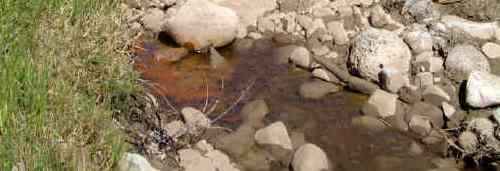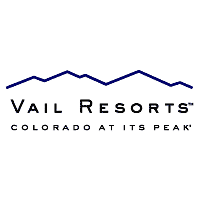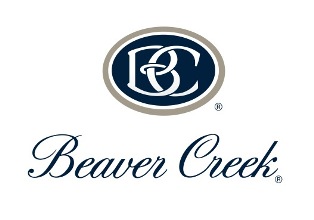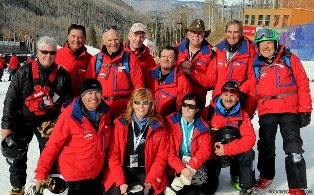BLM meeting focuses on fracking chemicals used for natural gas drilling on federal lands
Colorado conservation groups are rallying the troops in Golden today for one of only three forums nationwide that the U.S. Bureau of Land Management (BLM) is conducting on the controversial natural gas drilling process called hydraulic fracturing, or “fracking.”
BLM director Bob Abbey is weighing whether to require public disclosure of chemicals used in fracking operations on federal lands. The process is currently exempted from regulation by the U.S. Environmental Protection Agency (EPA) under the Safe Drinking Water Act. The exemption was granted by Congress under the Energy Policy Act of 2005.
Today's BLM meeting will be held from 4 p.m. to 9 p.m. at the Denver Marriott West in Golden. The forum will pertain only to federal public lands, but there is growing concern about potential water contamination from fracking on private land as well.
Colorado Reps. Diana DeGette and Jared Polis, both Democrats, have introduced legislation to require public disclosure of the chemicals used in fracking, which also injects water and sand deep into natural gas wells to fracture tight rock and sand formations and free up more gas.
The Fracturing Responsibility and Awareness of Chemicals (FRAC) Act would also remove the 2005 congressional exemption, known by critics as the “Halliburton Loophole” for the oil and gas services company that perfected the process, and would then clear the way for the EPA to regulate fracking under the Safe Drinking Water Act.Landowners and conservationists in Colorado have for years been demanding full disclosure of the chemicals used in the process, which industry officials maintain are mostly benign but must be kept secret for proprietary reasons. A recent study by congressional Democrats found 29 possible human carcinogens are being used in fracking. Another study revealed widespread use of diesel fuel.
“Without knowing what chemicals to look for, oil and gas field residents cannot conduct a thorough baseline water quality test or pinpoint causes of illnesses and pollution related to oil and gas activities.” said Lisa Bracken, a member of the Western Colorado Congress and a resident of Silt whose creek on her property was contaminated by a gas well blowout in 2004.
After a then state record fine was levied against EnCana and the problem was supposedly fixed, another natural gas seep occurred in West Divide Creek in 2008. The Colorado Oil and Gas Conservation Commission (COGCC), the state agency that regulates drilling, concluded the original problem was caused by a faulty cement job on the well casing, not the actual fracking of the well.
Tisha Schuller of the Colorado Oil and Gas Association (COGA) industry trade group says in an AskMen.com article reposted on the COGA website that “… the COGCC has investigated hundreds of cases and to date has found no water well contamination attributable to hydraulic fracturing. And these include the flaming faucets and the bubbling surface water in West Creek Divide wetland, both of which were determined to be naturally occurring methane or gas unrelated to drilling.”
Bracken had this take: “It took two and half years for the Colorado Oil and Gas Conservation Commission to conduct sampling of gas bubbles coming up in the creek. When the seep was finally sampled, a suite of production gas compounds was detected. Yet, six months later, we still don't know what other compounds may be present. We know, whatever is there is enough to paralyze a frog found swimming in it.”
Oil and gas industry representatives have for years said fracking occurs so far below shallow groundwater sources that it's virtually impossible for the process to contaminate drinking water supplies. Faulty well casings or leaks from holding pits used to store fracking fluids are much more common. But critics still want full public disclosure rather than merely requiring operators to provide fracking ingredients to emergency responders or state regulators upon request, which is what current Colorado regulations require.
“Disclosure of hydraulic fracturing chemicals is a fundamental, common sense step toward sound management,” Colorado Trout Unlimited said in a release. “Regulators, land managers and the public have a right to know what is being put into the ground to release natural gas. Greater amounts of information and improved access to it will help increase the understanding of hydraulic fracturing and help managers prevent impacts.”
But Schuller says fracking was never regulated by the EPA under the Safe Drinking Water Act and that the 2005 Energy Policy Act was “nothing more than a restatement of current and practiced law.
“Remember, hydraulic fracturing fluids are not being injected into drinking water. They are being injected into the oil- and gas-bearing formation, the one that has been geologically isolated for millions of years. The shallow drinking water aquifers are protected by layers of metal pipe and cement that make up the well bore.”
BLM director Bob Abbey is weighing whether to require public disclosure of chemicals used in fracking operations on federal lands. The process is currently exempted from regulation by the U.S. Environmental Protection Agency (EPA) under the Safe Drinking Water Act. The exemption was granted by Congress under the Energy Policy Act of 2005.
Today's BLM meeting will be held from 4 p.m. to 9 p.m. at the Denver Marriott West in Golden. The forum will pertain only to federal public lands, but there is growing concern about potential water contamination from fracking on private land as well.
Colorado Reps. Diana DeGette and Jared Polis, both Democrats, have introduced legislation to require public disclosure of the chemicals used in fracking, which also injects water and sand deep into natural gas wells to fracture tight rock and sand formations and free up more gas.
The Fracturing Responsibility and Awareness of Chemicals (FRAC) Act would also remove the 2005 congressional exemption, known by critics as the “Halliburton Loophole” for the oil and gas services company that perfected the process, and would then clear the way for the EPA to regulate fracking under the Safe Drinking Water Act.Landowners and conservationists in Colorado have for years been demanding full disclosure of the chemicals used in the process, which industry officials maintain are mostly benign but must be kept secret for proprietary reasons. A recent study by congressional Democrats found 29 possible human carcinogens are being used in fracking. Another study revealed widespread use of diesel fuel.
“Without knowing what chemicals to look for, oil and gas field residents cannot conduct a thorough baseline water quality test or pinpoint causes of illnesses and pollution related to oil and gas activities.” said Lisa Bracken, a member of the Western Colorado Congress and a resident of Silt whose creek on her property was contaminated by a gas well blowout in 2004.
After a then state record fine was levied against EnCana and the problem was supposedly fixed, another natural gas seep occurred in West Divide Creek in 2008. The Colorado Oil and Gas Conservation Commission (COGCC), the state agency that regulates drilling, concluded the original problem was caused by a faulty cement job on the well casing, not the actual fracking of the well.
Tisha Schuller of the Colorado Oil and Gas Association (COGA) industry trade group says in an AskMen.com article reposted on the COGA website that “… the COGCC has investigated hundreds of cases and to date has found no water well contamination attributable to hydraulic fracturing. And these include the flaming faucets and the bubbling surface water in West Creek Divide wetland, both of which were determined to be naturally occurring methane or gas unrelated to drilling.”
Bracken had this take: “It took two and half years for the Colorado Oil and Gas Conservation Commission to conduct sampling of gas bubbles coming up in the creek. When the seep was finally sampled, a suite of production gas compounds was detected. Yet, six months later, we still don't know what other compounds may be present. We know, whatever is there is enough to paralyze a frog found swimming in it.”
Oil and gas industry representatives have for years said fracking occurs so far below shallow groundwater sources that it's virtually impossible for the process to contaminate drinking water supplies. Faulty well casings or leaks from holding pits used to store fracking fluids are much more common. But critics still want full public disclosure rather than merely requiring operators to provide fracking ingredients to emergency responders or state regulators upon request, which is what current Colorado regulations require.
“Disclosure of hydraulic fracturing chemicals is a fundamental, common sense step toward sound management,” Colorado Trout Unlimited said in a release. “Regulators, land managers and the public have a right to know what is being put into the ground to release natural gas. Greater amounts of information and improved access to it will help increase the understanding of hydraulic fracturing and help managers prevent impacts.”
But Schuller says fracking was never regulated by the EPA under the Safe Drinking Water Act and that the 2005 Energy Policy Act was “nothing more than a restatement of current and practiced law.
“Remember, hydraulic fracturing fluids are not being injected into drinking water. They are being injected into the oil- and gas-bearing formation, the one that has been geologically isolated for millions of years. The shallow drinking water aquifers are protected by layers of metal pipe and cement that make up the well bore.”
![]() 0 Comments on "BLM meeting focuses on fracking chemicals used for natural gas drilling on federal lands"
0 Comments on "BLM meeting focuses on fracking chemicals used for natural gas drilling on federal lands"
Be the first to comment below.



 Vail Town Council to weigh new plan to redevelop T...
Vail Town Council to weigh new plan to redevelop T...  All about indexes
All about indexes  Transforming your social security into a winning r...
Transforming your social security into a winning r...  Pass sales, real estate transactions, revenues inc...
Pass sales, real estate transactions, revenues inc...  Vail Valley native with passion for Biophilic inte...
Vail Valley native with passion for Biophilic inte...  Beaver Creek starts work on new summer activities
Beaver Creek starts work on new summer activities  Land Trust, ECO Trails, Vail Resorts team up to cl...
Land Trust, ECO Trails, Vail Resorts team up to cl...  EUROVISION named Host Broadcaster for 2015 World A...
EUROVISION named Host Broadcaster for 2015 World A...  Vail Resorts brings back Lindsey Vonn's 'School of...
Vail Resorts brings back Lindsey Vonn's 'School of...  Hundreds turn out for 2015 World Championships vol...
Hundreds turn out for 2015 World Championships vol...  Eagle County Senior Health Expo and 9th Annual Hea...
Eagle County Senior Health Expo and 9th Annual Hea...  Final race of Vail Mountain Trail Running Series s...
Final race of Vail Mountain Trail Running Series s...  Before you write your will ...
Before you write your will ...  2015 World Ski Championships volunteer recruitment...
2015 World Ski Championships volunteer recruitment...  Ascent Sotheby’s International Realty in Vail an...
Ascent Sotheby’s International Realty in Vail an...  CDOT outlines road closures for local stages of US...
CDOT outlines road closures for local stages of US...  Italian artist creates unique trophies for Vail, B...
Italian artist creates unique trophies for Vail, B...  Vail Recreation District once again hosting Jake W...
Vail Recreation District once again hosting Jake W... 

